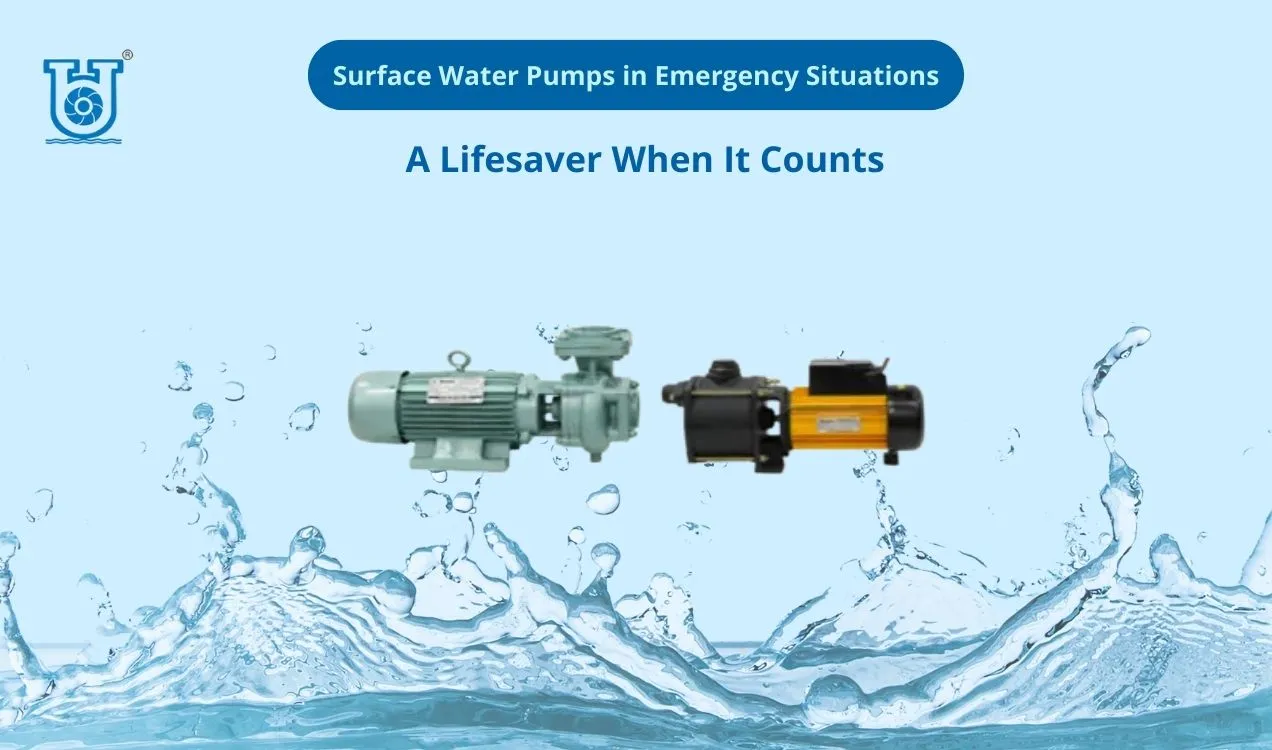Surface water pumps are important equipment during crises. It helps control floods, respond to disasters and ensure safe drinking water. These pumps are absolutely essential for both short-term disaster relief and long-term recovery programs since they are specially made to remove water from surface sources such as rivers, lakes and reservoirs. Analysing their purpose in an emergency helps us understand how surface water pumps save lives and prevent damage during times of need.
Surface Water Pumps’ Indispensable Role in Emergency
Management of water-related crises depends critically on surface water pumps. They are regularly used in flood management operations, especially in relation to major storms like hurricanes or heavy rain. These pumps are used to redirect extra water when water levels rise and threaten to flood cities, therefore lowering the risk of flooding and lessening damage to infrastructure and houses.
Apart from flood control, surface water pumps are absolutely essential for supplying drinkable water in case of crisis. Many times, natural disasters disturb already-existing water supplies, depriving influenced populations of safe, drinkable water. By extracting water from adjacent natural sources, surface water pumps can guarantee that the basic needs of communities are satisfied during crises by means of treatment to satisfy drinking water criteria.
Surface Water Pumps: Types and Applications
Emergency scenarios call for several kinds of surface water pumps, each intended for certain conditions and needs. Each of the most often used models—centrifugal pumps, diaphragm pumps and submersible pumps—offers special benefits depending on the need.
Centrifugal Pumps
Their effectiveness in managing big amounts of water makes centrifugal pumps rather popular. They run on a revolving impeller drawing water in and releasing it through an output pipe. For situations needing quick water disposal, including as involving floods or major water distribution projects, this makes them perfect. Many times, these pumps are utilised in concert with other emergency response tools to properly control water levels and stop additional damage.
Diaphragm Pumps
When handling water with a lot of particles or debris, including flooding, diaphragm pumps are especially efficient. These pumps handle water that would clog other kinds of pumps since they use a flexible diaphragm to provide suction. In post-disaster conditions when water is typically contaminated with mud, silt and other trash, this capacity makes diaphragm pumps very useful.
Submersible Pumps
Though they belong in a different category technically, submersible pumps are sometimes utilised in conjunction with surface water pumps in an emergency. These pumps are perfect for emptying flooded basements, tunnels, or wells since they are made to run totally submerged in water. For long-term water removal activities in disaster recovery, highly efficient and running continuously submersible pumps are absolutely needed.
Benefits of Readiness and Maintenance
Surface water pumps’ capacity to be effective in an emergency mostly depends on their upkeep and readiness. Neglectful maintenance of pumps could cause them to fail at pivotal times, therefore compromising efforts at emergency response. Appropriate maintenance calls for regular testing, inspection and making sure pumps are kept in a condition of readiness—complete with all required accessories and replacement parts.
Regular Testing and Inspection
Surface water pumps must be operational when needed, hence regular testing is quite vital. This entails looking for mechanical integrity, making sure every seal is in place and confirming that the motor and electrical components of the pump run as they should be. To be sure the pump can meet the demands of a real emergency, testing under load conditions is absolutely essential.
Stockpiling and Strategic Distribution
Apart from upkeep, emergency response organisations sometimes keep a reserve of surface water pumps. Having pumps easily accessible at key points guarantees that they can be quickly moved to disaster areas, therefore reducing response times. In places vulnerable to recurrent natural disasters, where quick water management solutions are absolutely vital, this is especially important.
Some Case Studies:
Many case studies show how urgently surface water pumps save lives in an emergency. For example, surface water pumps were essential in 2005 after Hurricane Katrina in emptying floodwaters from New Orleans. The quick installation of these pumps sped up rehabilitation initiatives and helped to lessen the scope of the tragedy.
In another instance, the 2011 floods in Thailand brought attention to the need for surface water pumps in major disaster control. Water was diverted from important regions using the pumps, therefore preventing more floods and lessening the general impact on the impacted populations. These events highlight how crucially surface water pumps perform in both long-term rehabilitation initiatives and instantaneous disaster response.
Surface Water Pumps’ Future in Emergency Response
Surface water pumps become more and more important in emergency readiness and response as climate change raises the frequency and intensity of natural calamities. Improvements in pump technology including the creation of more resilient and economical models—will increase their performance in the next disaster-like situations.
Furthermore, including surface water pumps in other emergency response systems including automated flood detection and water quality monitoring will help to increase the speed and efficiency of disaster response. Operating these pumps using renewable energy sources, such as solar electricity, could also help to solve logistical problems related to fuel delivery during extended crises.
Wrapping Up
Essential equipment in an emergency, surface water pumps enable disaster recovery, potable water supply and flood control. Their fast water removal from flooded areas and their roles in guaranteeing access to clean water define them as pillars of emergency preparedness and response mechanisms. Their success, though, depends on frequent maintenance, preparedness and thoughtful application.
Surface water pumps will become even more crucial as the threat of natural catastrophes keeps growing in interest for protecting populations. Investing in these technologies and guaranteeing their availability will help us to increase our resilience to crises and save lives when it most counts.


